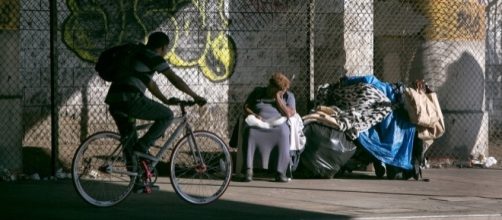The recent rise in the Homeless population in the greater Los Angeles area is a demonstration of a severe social problem that seems to grow every year. It was recently announced that the homeless population of LA County had increased by more than 20% over the last year.
This gain comes on the back of an already high rate of homelessness, and the local authorities are at a loss when it comes to a positive way to move forward. The situation among the young members of the homeless population is especially dire, with The Los Angeles Homeless Services Authority reporting Wednesday that there were 6,000 homeless young people counted across the county in January, and this represents a 61% increase over the 2016 total.
These rise in the level of homelessness is happening at a time when the divide between the social classes is widening at a rapid pace, and affordable housing is almost impossible to find. In 2015 authorities declared a public emergency in an attempt to create change in this ever-worsening situation, but it was to no avail.
A wider issue
The western United States has a much larger homeless population than the east, and California is at the heart of the homeless epidemic. It is estimated that 1 in every five homeless person is in California, but these statistics are never very reliable.
For many people, the homeless are mostly invisible, and this only adds to the difficulty that the disenfranchised population faces.
The system of measuring the homeless population isn't an exact one, with volunteers counting the homeless on a biennial basis.
Dennis Culhane told the Guardian that the methodology is imperfect when asked about the inaccuracies inherent in the system, He is a researcher at the University of Pennsylvania and a principal investigator for the Homelessness reports that are presented to the US Congress every year.
The human cost
It is worth remembering that the homeless are forgotten about, and there is much suffering that comes along with this unenviable position. San Francisco is also a mecca for the down and out, with a homeless population that is growing all the time.
Jennifer Friedenbach is the executive director of a group that deals with Homelessness in San Francisco, and she has a view of the situation on the street.
She told the Guardian in 2016 that, “As folks are forced to remain on the streets for longer and longer, they’re really disintegrating. They’re developing more severe mental illnesses and more serious medical disorders, and losing limbs and in wheelchairs.”
It isn't difficult to see the how these problems could grow far worse as time goes on, but solutions have been hard to come by. Despite all the money being spent to help people that are living on the street, the numbers just seem to grow without end. What is happening appears to be more than just a passing phase in an otherwise healthy economy, and looks more like a changing social dynamic all the time.


